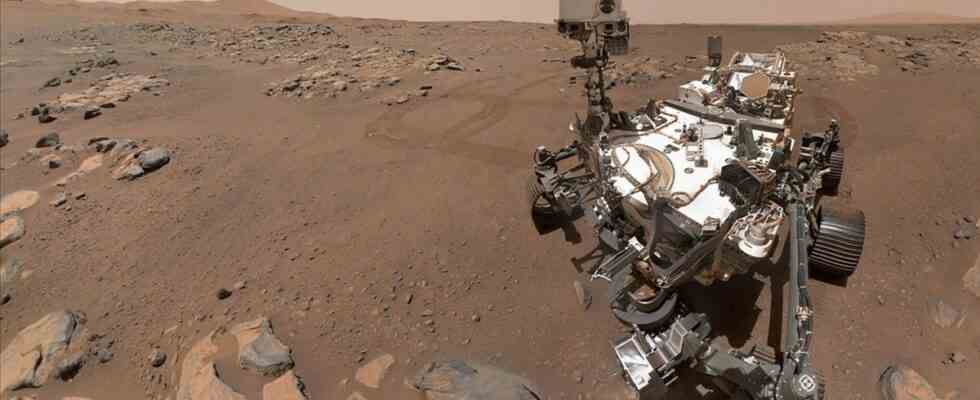Until now, it was only a theoretical concept: extracting oxygen for breathing air and rocket fuel from the thin carbon dioxide atmosphere of the planet Mars. With an experiment on board the US rover perseverance has now succeeded for the first time in actually producing oxygen from the Martian air – even if only 50 grams over the course of a year. The experiment is an important step for future manned missions to our neighboring planet, write the researchers involved in the journal Science Advances.
“Moxie is the first step towards a system many hundreds of times larger for human exploration of Mars,” says Jeffrey Hoffman from the Massachusetts Institute of Technology in the USA, who developed the system together with colleagues. The abbreviation Moxie stands for “Mars Oxygene In Situ Utilization Experiment”. The experiment takes place on the rover perseverancewhich landed on Mars on February 18, 2021 as part of NASA’s “Mars 2020” mission.
The system splits carbon dioxide into carbon monoxide and oxygen.
The air pressure on the red planet is only about a hundredth of that on Earth. In addition, this air consists mainly of carbon dioxide (CO₂). Astronauts must therefore take enough oxygen with them to breathe on the journey to Mars. What’s more, oxygen is also an important component of rocket fuel, without which a return to earth would not be possible. Since transporting large amounts of oxygen to Mars would be expensive and at the expense of other payloads such as supplies and scientific equipment, the idea of producing oxygen on Mars itself, i.e. “in situ”, seems reasonable.
Carbon dioxide molecules consist of one atom of carbon and two atoms of oxygen. If these molecules are broken down, oxygen can be obtained. This is exactly what has now been achieved for the first time on Mars with the Moxie experiment. The thin Martian air first flows through an extremely fine filter to remove the ubiquitous dust. Moxie then compresses the CO₂ using a pump and then heats it to 800 degrees Celsius.
In the last step, the carbon dioxide enters an electrolysis cell, in which the molecules are split with the help of a catalyst and electrical voltage into carbon monoxide molecules with only one oxygen atom and individual oxygen atoms. The latter are then – according to the goal – available for breathing air and for rocket fuel. In the Moxie experiment, however, only the purity of the oxygen obtained was checked – then it was released into the Martian atmosphere.
The oxygen production worked during the day and at night.
Hoffman and his colleagues conducted a total of seven test runs with “Moxie” in 2021. Oxygen production worked without any problems – to the delight of the researchers at any time of the day or night and during all four seasons on Mars. According to researchers’ estimates, about 31 tons of oxygen are required to return from Mars to Earth – the Moxie experiment is still a long way from that. But the scientists see no obstacles to the construction of significantly larger devices, which could also work more effectively through technical improvements.

